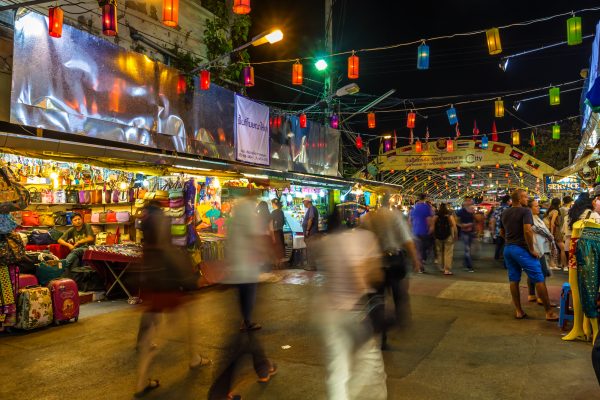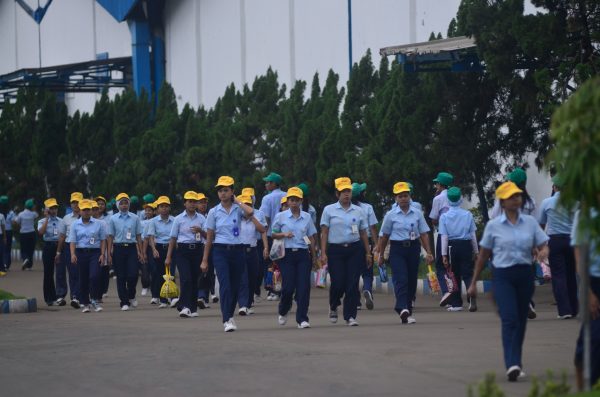ASML is a Dutch multinational corporation known globally as “chipmaking’s biggest monopoly” due to its crucial role in the industry’s supply chain. ASML is the world’s largest producer of photolithography machines, which use a light source to etch electronic pathways onto silicon wafers. This process is an essential step in creating the semiconductors that are sold by the likes of TSMC, Intel and NVidia, which all purchase ASML’s machines for their chipmaking.
The most powerful lithography machines made by ASML are called EUVs (Extreme Ultraviolet), they are the enhanced version of DUVs (Deep Ultraviolet). Both carry out the same process, but DUVs use light of a longer wavelength, which is less powerful and cannot etch details as fine as an EUVs. Finer etchings mean more pathways can be printed onto a silicon wafer, which creates a faster and more powerful chip.
ASML is currently the only company in the world that can manufacture EUV machines. Their EUVs are sold for up to $200 million per machine; their newest model in production, the High NA EUV machine, is valued at over $300 million and is roughly the size of a truck. It is scheduled to be on sale by the end of the year and is projected to enable the first mass production of 2 nanometer microchips, the most powerful chips to have been manufactured to date. While there are many companies worldwide in the photolithography market, including Nikon and Canon, ASML has the most advanced technology in this field.
Following pressure from the United States, in 2019 the Dutch government introduced restrictions to prevent ASML from selling their EUV machines to China. These restrictions were a response to international fears about the potentially dangerous applications of this technology, such as the development of China’s military power and the enhancement of AI that can be used for cyberattacks. Due to this ban, ASML can only sell their less powerful DUV machines to China.
However, it was discovered that Chinese firms will likely be able to create 5 nm chips with these DUVs, which are still chips of significant power. As a result, the U.S. called on the Dutch government to introduce further export controls on ASML technology, this time on the sale of DUV machines too. This move sparked debate within the Netherlands considering the revenue that would be lost from the reduction in sales to China, which is ASML’s third largest market after Taiwan and South Korea.
There is an argument that increasing export controls will impact ASML’s investment in innovation and hinder their ability to boost production rates in the context of the present worldwide chip shortage. ASML itself said that it had an order backlog exceeding $38 billion less than a year ago. Despite this, the Netherlands chose to introduce these new export controls from this September, which require ASML to apply for permits to sell several of their top DUV models to China. The decision was justified as an application of the 3-way Semiconductor Export Controls deal the Netherlands made with the United States and Japan back in January, where the three nations agreed to work together to reduce the export of chip-making equipment to China. Last week, it was announced that another fresh set of export restrictions may be introduced by the Dutch government in the near future.
These restrictions are, at least in the short term, likely to impede China’s progress within the semiconductor industry and limit Chinese companies to creating slower and less efficient chips. It is also notable that the rest of Europe appears to be following suit, with the European Commission presenting an economic package earlier this year that aims to extend export controls of the bloc on certain technologies. This development highlights the influence of the decisions made by the leading companies in the semiconductor industry and shows how their actions can encourage multilateral collaboration in their local regions. The United States convincing the Netherlands to align with their approach to Chinese tech may therefore mark the start of a broader international effort to collaborate on issues relating to China’s chip-making industry.
In light of the increasing number of export controls, China has been heavily investing in its domestic semiconductor industry with the hope of eventually becoming independent of global supply chains. The end goal is to create their own EUV machines as, if not more, powerful than ASML’s. Chinese company Shanghai Micro Electronics Equipment is expecting to release China’s first 28 nm lithography machine by the end of 2023, an achievement inevitably dwarfed by ASML’s High NA EUV release at a similar time.
However, China does appear to be starting work on manufacturing much more powerful machines, with Tsinghua University, Nanjing University, the Chinese Academy of Sciences and the firm Specreation all filing patents for EUV technology in the last year. All these patents are, however, specifically for creating an EUV light source, rather than the machine as a whole. This light source appears to be China’s current focus and the first EUV component they intend to perfect. While Chinese firms have been purchasing light source technology from U.S.-based KMLabs to study and reverse engineer, there are many obstacles in their mission.
First, it does not appear that results have been achieved in this reverse engineering process so far. It is also very hard to integrate new light source technology within existing EUV systems, which adds further stages and hence delays in the process of mastering an EUV light source. Furthermore, the light source requires an array of gases, light collectors and amplifiers, and magnetic field technology in order to work and so far, China has been unsuccessful in the development of any of these components. It is predicted by specialists that it will take a minimum of two years for China to create these light sources.
While China set a target of reaching 40 percent self-sufficiency in chips by 2020 and 70 percent by 2025, their self-sufficiency has not yet passed 20 percent. China continues to import around $400 billion worth of semiconductors annually. These statistics reflect that the Chinese quest for chip self-sufficiency is severely behind schedule.
There is concern that if China is able to infiltrate companies like ASML and steal their data and hardware, they could bypass years of work and make EUV machines in the near future. Earlier this year, it was reported that an ex-ASML employee who was based in China was able to steal chip data. Although export control regulations may have been violated, the acquired data does not seem to have had a significant impact on China’s development of an EUV. Chinese tech firm DongFang JingYuan Electron was accused by ASML of intellectual property theft back in 2021 and this has also not appeared to lead to any significant developments in the Chinese tech industry. Creating an EUV machine requires masses of data, resources, and expertise, meaning that even if these cases of data theft become more frequent, they are unlikely to have a ground-breaking effect.
However, there is one development more concerning to the West. China has been investing in developing a shortcut to achieving high levels of chip efficiency without needing the most powerful equipment, through a process known as advanced packaging. This process involves a variety of stacking techniques that better aggregate microchip components to create a more powerful device.
Traditionally, the packaging stage of chip-making is outsourced to OSAT companies that prioritize low labor costs and have therefore not invested in innovating these techniques. Now, as Paul Triolo, an expert on Chinese technology at the Washington-based consulting firm ASG, told the China Project, “Chinese firms, including Huawei, are looking at the advanced packaging issues intently.” Firms in the United States, South Korea, and Taiwan are doing the same. Success with this development could mean that China has the potential to create powerful chips domestically without requiring EUV machines. Since this advanced packaging uses hardware and technology already in China’s possession, it will be difficult to for the United States to counter.
It does not appear that China will be able to create their own EUV machines in the near future, even with illegally acquired data, billions in funding, and the hardware they intend to reverse engineer. It is clear, however, that the discovery of how advanced packaging techniques can be used to enhance the power and efficiency of semiconductors is a phenomenon that should be closely monitored.
The United States and its allies are working on developing this technique, both for the benefit of their domestic tech industries and also in order to understand how China’s semiconductor industry might be developing. There is no guarantee this will work as an effective shortcut but the possibility of it highlights the need to consistently monitor the developments in this industry.
Another concern relates to ASML’s 1,500 employees in China who could be considered a potential security risk in light of the recent cases of espionage reported by the company. As Beijing very recently instructed the “whole of society” to guard against China’s foreign enemies, these employees become an even greater potential target. It is very possible that the pressure could be exerted on these individuals to use their position to steal from ASML as employees have done before. Efforts must be made to enhance the company’s security and to monitor all possible methods of illegal infiltration.
Although the United States has made significant progress in securing the cooperation of companies in the industry, China appears determined to achieve semiconductor independence and will continue to pour its resources into this project.





















Discussion about this post